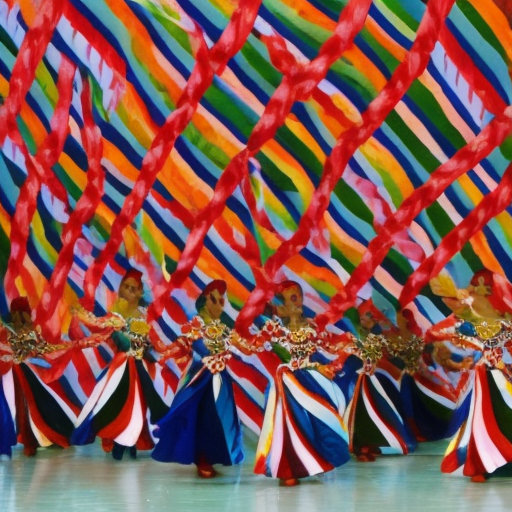Summary: Folk dance is a traditional form of dance that is passed down through generations within a specific culture or community. It is characterized by its connection to the community’s history, customs, and values. Folk dances are often performed at social gatherings, festivals, and celebrations, and they serve as a way to preserve cultural heritage and promote social cohesion.
Origins and Characteristics
Folk dance has its roots in the ancient traditions of various cultures around the world. It emerged as a way for communities to express their identity, celebrate important events, and pass on their history and values to future generations. Each culture has its unique style of folk dance, with distinct music, costumes, and movements.
Folk dances are typically performed in groups, with participants forming patterns or formations that reflect the community’s social structure. The movements are often repetitive and rhythmic, reflecting the daily activities of the community, such as farming, hunting, or courtship rituals. The music accompanying the dance is usually traditional and played on traditional instruments.
Types of Folk Dance
There are numerous types of folk dances around the world, each with its own cultural significance and style. Some well-known examples include:
- Bhangra: A lively and energetic folk dance from the Punjab region of India, traditionally performed by men. It combines vigorous movements with rhythmic music and is often associated with harvest celebrations.
- Hula: A traditional dance from Hawaii that tells stories through graceful movements and gestures. It is accompanied by chants and songs and is an important part of Hawaiian culture and identity.
- Flamenco: A passionate and expressive dance form from Spain, characterized by intricate footwork, hand clapping, and guitar music. Flamenco is deeply rooted in Spanish history and is considered a symbol of Spanish culture.
- Céilí: A social dance from Ireland, performed in groups with intricate footwork and lively music. Céilí dances are often performed at social gatherings and are an integral part of Irish culture and community life.
- Samba: A vibrant and energetic dance from Brazil, often associated with the Rio Carnival. It combines fast-paced footwork, hip movements, and lively music, reflecting the rich cultural heritage of Brazil.
Importance and Impact
Folk dance plays a crucial role in preserving cultural heritage and promoting social cohesion within communities. It serves as a means of passing down traditions, customs, and values from one generation to another. By participating in folk dances, individuals connect with their roots, strengthen their sense of identity, and develop a deeper understanding of their cultural heritage.
Furthermore, folk dance brings people together, fostering a sense of unity and belonging. It is often performed at social gatherings, festivals, and celebrations, providing a platform for community members to interact, bond, and celebrate their shared culture. The collective nature of folk dance encourages cooperation, teamwork, and mutual respect among participants.
In addition to its cultural significance, folk dance also has artistic value. It is appreciated for its beauty, grace, and the skill required to perform intricate movements and patterns. Many folk dances have gained international recognition and are performed and appreciated by people from different cultures around the world.
Conclusion
Folk dance is a vibrant and diverse art form that reflects the rich cultural heritage of communities worldwide. It serves as a way to preserve traditions, promote social cohesion, and celebrate cultural identity. By participating in folk dance, individuals connect with their roots, strengthen their sense of belonging, and contribute to the preservation of their cultural heritage. Whether it’s the energetic Bhangra from India or the graceful Hula from Hawaii, folk dance continues to captivate audiences and inspire a sense of unity and appreciation for cultural diversity.












